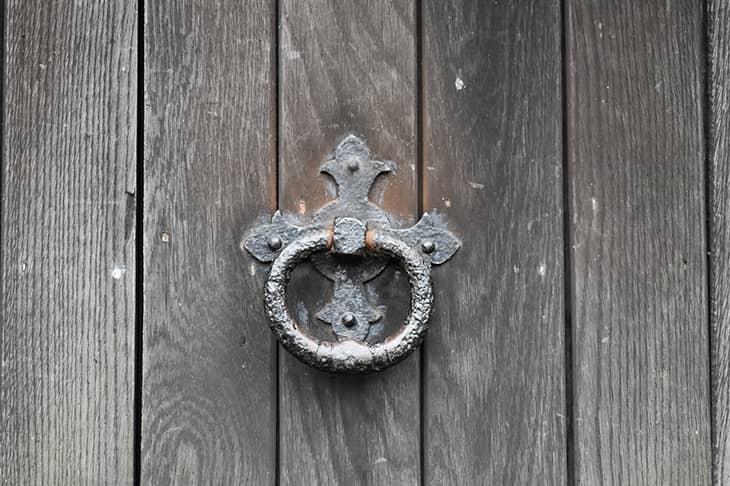The end of summer 2021, the end of the great British staycation. I sat on the grass outside the post office on Holy Island, Northumberland and watched as the tourists milled about. After a visit to the Priory, and the Pilgrims Fudge Kitchen, a fair few of them would wander up to the Catholic church, St Aidan’s. Even if you’re not the sort to ever go to church, you might pop in for a quick look on Holy Island, aka Lindisfarne. This is where the gospels were translated, and where St Aidan, in 635, founded the monastery from which he converted the pagan north. Aidan came here from Iona, at the request of nice King Oswald, and went about on foot evangelising. Not horseback, says Bede, he didn’t want to set himself above the locals.
On Holy Island the tourists are polite. They wear Gore-Tex and walk the village with their heads slightly tilted, signifying interest and respect. But when they try the door of St Aidan’s, they find it locked. Some of them push hard, then look embarrassed. Watching them, I feel embarrassed for the church. On the eve of St Aidan’s feast day (31 August) it feels like a metaphor, or a portend.
This was the evangelical opportunity of the century. All summer the causeway on to the island has gleamed with cars and camper vans. St Aidan himself would have welcomed them, but his church was shut, though St Aidan’s Winery, the mead shop down the road, was heaving. For mass times, please check notices on the door, says the church website. But there are no notices on the door, and the phone number rings through to voicemail.
Perhaps I’m taking it too personally. There is an open church on the island: the C of E parish church of St Mary where visitors can light candles, though not sit down. St Aidan’s is small and there’s no official resident Catholic priest. There are tide times to negotiate and the parish mother church is 40 minutes down the A1. I expect church officials simply thought: why bother? A tourist isn’t a pilgrim.

But place matters to humans. It affects them in weird ways. Men travel miles to the site of ancient battles, and stand in empty fields with distant, watery eyes, hearing canon fire. We go to graveyards to talk to the dead. And Holy Island can make a pilgrim of anyone.
Long before I thought of myself as a believer, without ever quite knowing why, I’d drive 30 minutes or so from home, here, to offload my twenty-something angst. I’d sit facing east on the harbour steps and mope at the pale sea. Later, I preferred Hobthrush — the tiny tidal island where St Cuthbert is said to have gone to escape his 7th-century fans. A hob is a medieval goblin, and at the right time of year seals, lolling on nearby sandbanks, wail and coo like diabolical backing singers. After I converted, I’d sit in St Aidan’s church. There was rarely a priest there, but it was open. A holy place in a holy place.
And that’s what puzzles me most. You don’t even need a priest present, just a place to pray. The rules have relaxed. We’re taking responsibility for ourselves. So what’s the harm in just leaving the church doors open?
On Holy Island the tourists are polite. They wear Gore-Tex and walk the village with their heads slightly tilted
I’m extremely sympathetic to any islanders anxious about Covid-infested visitors. If everything was shut, it would make sense to keep non-locals at bay. But the gift shops and cafés jostle with tourists. People queue for bookmarks and commemorative coasters. The Winery sells mead faster than they can make it. So why not let people pray? Drain the holy water if you like, swap it out for holy hand gel, but let people creep in, and offer up this terrible year.
It’s not just the Catholic church that’s shut. On the way to the Winery, the road runs past the United Reformed Church (also shut), behind which is a tiny cupboard, the boiler room chapel, with just a cross and a seat. My small son, though named for a Lindisfarne saint, is sceptical about God, but this he considers his personal sanctuary; his hotline to the Almighty. Like an idiot, I assumed it would be open and let him head there straight away. Nope. Shut with an officious little new gold lock.
I sent a polite email to the URC wondering why the tiny chapel was closed, and a few days later, received a friendly reply: ‘I am sorry you were disappointed to find the Centre and the boiler room chapel closed. The Centre and the small chapel are closed as we do not have the facilities to be Covid-secure. This is under regular review.’
I’m grateful for the reply, but Covid is wearing thin as an excuse. This is a one-person chapel. You couldn’t squash in two households if you tried. It’s no less Covid-secure than any of the zillions of open public loos. And what sort of message do you give the Christian-curious if they can buy apricot crumble vegan ice-cream from the Pilgrims Fudge Kitchen, but find nowhere to kneel?
On the far eastern edge of the island, in the shadow of Lutyens’ Lindisfarne castle, there’s a beach made up of stones of various sizes and types: limestone, basalt, sandstone, ironstone.
For the past few years, visitors to the island have taken to piling these stones up into stacks. But this year, the towers have multiplied. It’s a strange sight, as if the beach has grown suddenly upwards. People who enjoy being cross think the stone stacks an abomination. They ruin the wilderness, they say, and destroy the illusion that we’re all alone in the untouched wild.
But every place has been touched by other people. There’s something suspect about the desire for fictitious pristine nature. I find the stone stacks moving. I think of each one as a sort of prayer. Perhaps it’s what you do to mark your visit, when you’ve tried the door and found the church is shut.







Comments